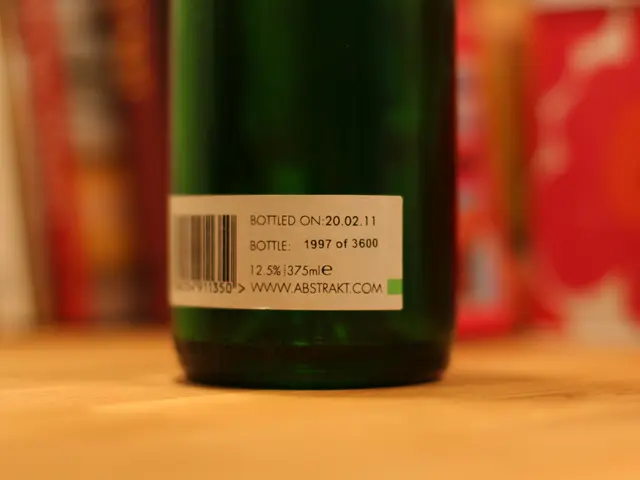Distinguishing Between Age Spots and Skin Cancer: Recognizing theVariations
Turning the Tide on Age Spots and Skin Cancer: Unveiling Key Differences
As time marches on, our skin undergoes changes, some of which can be concerning. Among these alterations are age spots and skin cancer. Both conditions can manifest themselves on the skin and might seem similar at first glance. However, understanding the nuances between the two is pivotal in identifying when medical advice may be necessary. Buckle up, folks, as we delve into the tantalizing world of dermatology!
The Skinny on Skin Aging
Age spots, also known as liver spots or solar lentigines, are small, dark patches that crop up on our skin as a result of the body pumping out excess melanin to shield the skin from the sun's harmful rays. Typically found on fairer complexions, age spots tend to appear from middle age onward, lurking on sun-drenched areas such as the face, hands, shoulders, and feet.
The Fierce Fighter: Skin Cancer
Contrarily, skin cancer is a deadly foe. Just like age spots, it favors sun-soaked zones due to the damage caused by UV radiation from the sun or tanning beds. Skin cancer emerges when UV radiation or other environmental or genetic factors spur skin cell mutations, causing them to multiply and spread at an alarming rate. It is imperative to differentiate between age spots and skin cancer since the former is harmless, whereas the latter can metastasize and be potentially fatal.
The Lumbering Liver Spot and the Cunning Cancer
Without further ado, let's dissect the tell-tale signs that set age spots apart from cancerous growths.
Age Spot Symptoms
Age spots are usually flat and smooth, with a yellow, brown, or gray hue and defined edges. They range from a few millimeters to several centimeters in size and can multiply during the summer, only to fade a bit in winter. You'll find these pesky spots on sun-exposed areas.
Skin Cancer Symptoms
Cancerous growths can present themselves in a myriad of ways, depending on their type. Symptoms to watch out for include asymmetry, uneven or blurred borders, changing size, color, or shape, multiple colors on the same spot, and raising the 'alarm bell' if they cause irritation, pain, oozing, or bleeding. Other warming signs include raised, red patches or pale, firm areas that resemble scars.
When to Sound the Alarm
If you notice any changes to the skin, the general rule of thumb is to keep a close watch and consult with a healthcare professional if any suspicious symptoms arise. Early detection of skin cancer can improve treatment outcomes and beat the beast!
The Doctor Is In
A doctor or dermatologist can confirm a diagnosis by performing a physical examination, scrutinizing the appearance, texture, and placement of the spot. If further investigation is required, they may conduct a skin biopsy to examine skin cells under a microscope. The results will reveal whether you're dealing with age spots, skin cancer, or another condition altogether.
Taming the Wild Spots
Age spots don't require treatment since they are benign, but some individuals might want to lighten their appearance. A plethora of over-the-counter creams and lotions can help reduce the appearance of age spots, while dermatologists can recommend more potent treatments like laser therapy, cryotherapy, microdermabrasion, or chemical peeling.
Cutting Cancer at the Root
Treatment for skin cancer hinges on various factors, including the type and stage of cancer, but surgical removal is common for basal cell and squamous cell carcinomas. Treatments can also include topical therapies, radiation therapy, chemotherapy, immunotherapy, and systemic medication. Prompt, early detection and treatment significantly boost prognosis.
Wrap It Up
In a nutshell, age spots and skin cancer can bear a striking resemblance, but by inspecting the size, shape, texture, and color of marks on the skin, one can learn to discern each condition and decide when it's time to consult a medical professional. Never underestimate the importance of early skin cancer detection and remember - an ounce of prevention is worth a pound of cure! Embrace your skin, my friends, and stay radiantly healthy!
- In the field of oncology, it is crucial to differentiate between age spots and skin cancer, as age spots are harmless, while skin cancer can be potentially fatal.
- Senior citizens should be vigilant about skin changes, as they are at risk of developing both age spots and skin cancer, particularly on sun-exposed areas.
- The science behind skin-care and medical conditions plays a significant role in our understanding of age spots and other skin conditions like skin cancer.
- Skin-care products and treatments for age spots can help reduce their appearance, but it's essential to consult a healthcare professional if there are any concerns about potential skin cancer.
- Effective treatment for skin cancer depends on the type and stage of the cancer, and may include surgical removal, topical therapies, radiation therapy, chemotherapy, immunotherapy, or systemic medication.







